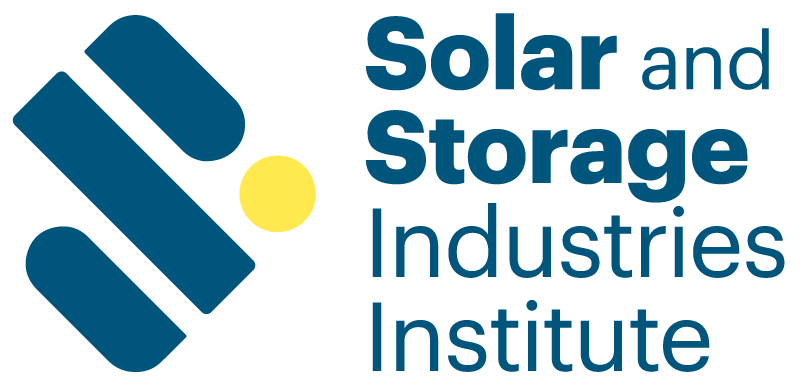FARMS Project
About the FARMS Project
As solar continues to expand to meet accelerating electricity demand and decarbonization goals, farmland has become an attractive location for project siting. Developers find the cleared, generally flat land with good soil composition to be favorable for construction activities, while farmers benefit from the additional income streams solar can provide. However, project development activities on farmland have increasingly encountered public opposition, with concerns ranging from preservation of farmland to rising land prices.
This opposition has led developers and other renewable energy advocates to explore a variety of strategies to address stakeholder concerns, including the implementation of dual-use or agrivoltaic elements in project design. Agrivoltaics is the practice of agriculture under, between and around solar panels.
As part of a 2 year project funded under the U.S. Department of Energy’s FARMS program, SI2 and project partners are studying barriers to agrivoltaics and developing recommendations to overcome them. The first part of this research effort featured the first national survey to capture sentiment about solar on farmland from hundreds of farmers, solar developers, and utility stakeholders. The survey results will be supplemented by a series of case studies and then used to create a best practice guides customized for farmer, solar developer, utility and policy maker audiences. Project deliverables will also include a comprehensive final report and contract, financial and legal templates for practitioners.
Solar + farms survey
resources
Check out these tools to learn more about the FARMS survery
Full Report
The Solar+ Farms survey captures sentiment about solar on farmland from hundreds of farmers, solar developers, and utility stakeholders.

press release
Report: 70% of America’s Farmers Open to Solar Development
Over 70% of farmers are open to large-scale solar projects on their properties if system designs allow for continued agricultural production, according to a report released today by the Solar and Storage Industries Institute (SI2).
Solar + farms survey
Key Findings
Get insights into the Solar + Farms survey results
Farmers are open to solar
Up to 70% of farmers open to large-scale solar on farmland, under certain conditions
- Large majorities of farmers are open to the idea of large-scale solar on farmland, but support is primarily conditioned on the inclusion of dual-use or agrivoltaic strategies in system design
- While 30% of farmer respondents consistently opposed large-scale solar under any condition, these respondents were less likely to be familiar with agrivoltaic design concepts
solar Industry sees Farmland As Easier to Develop
Farmland projects seen by developers as easier to develop in almost all respects, except permitting
- The frequently level and clear landscapes with good soil created by farmers often create more favorable conditions for developers. However, permitting is seen as significantly harder for farmland projects due to public opposition to development on farmland.
- Developers expect that large portions of their future business will be on farmland. Many expect to use agrivoltaic design concepts in the future if they don’t already.
farmer and developer motivations
Farmers motivated by additional income streams; developers by reputational benefits
- Farmers are motivated to add large-scale solar installations to their farmland by the additional income streams presented by the systems, with most indicating that these income streams are intended to supplement and not replace the farm operation. Most farmer respondents were in favor of system designs that allowed continued use of land under the solar panels for agricultural purposes
- While developers are interested in pursuing farmland solar projects because they can be easy to develop in many respects, they are interested in pursuing agrivoltaic system designs because it preserves farmland and enhances the reputation of their company within the community. Developers want to grow their business, but there is recognition that keeping farmland in operation where possible can help enable growth.
farmers want agrivoltaics
Farmers and Developers want to see agrivoltaic projects, but many dual-use strategies can be challenging to implement
- Farmers overwhelmingly point to agrivoltaic strategies as mitigants to their concerns around farmland solar development. Over 85% of developer respondents have tried or would try to implement agrivoltaic designs in developing projects. Where the parties diverge is around implementation difficulty, with developers pointing to challenges in deploying several agrivoltaics design strategies
- However, developers with experience in developing agrivoltaics projects report less difficulty in implementing all agrivoltaics strategies and less concern around potential agrivoltaic roadblocks.
Moving agrivoltaic adoption forward
All stakeholders agree that incentives, financial/legal guidance, best practice guidelines can help address barriers
- Of the 17 strategies proposed, respondents across pathways coalesced around 8 strategies, with incentives for agrivoltaics projects heavily favored by most respondents. Legal and contract guidance, and per-reviewed research on system design, soil and water impacts and crop and livestock impacts also rose to the top.
Demographic Analysis
Less support for farmland solar and lower levels of familiarity with agrivoltaics from non-white farmer respondents
- Though sample sizes were small, non-white farmer respondents were less likely than white respondents to be conditionally open to utility-scale solar on farmland (57% to 80%) and were less likely to express familiarity with agrivoltaics than white farmers (33% to 69%)
- Non-white farmers also preferred to receive information on solar development on farmland from different sources than white farmers, with non-white farmers preferring extension services, farm and farmland member organizations and state agricultural agencies, while white farmers preferred solar developers and research centers/universities.
- Non-white farmers also preferred to receive information on solar development on farmland from different sources than white farmers, with non-white farmers preferring extension services, farm and farmland member organizations and state agricultural agencies, while white farmers preferred solar developers and research centers/universities.

